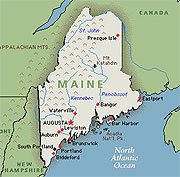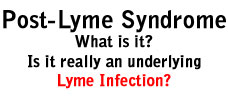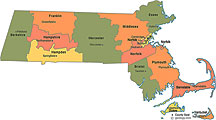Claritin kills Lyme bacteria! Must read!
By Bryan Rosner on Feb 12, 2015 in Treatments | comments(0)
Researchers at Stanford have now shown that Claritin, i.e. loratadine, kills Borrelia. Read more here.
By Bryan Rosner on Feb 12, 2015 in Treatments | comments(0)
Researchers at Stanford have now shown that Claritin, i.e. loratadine, kills Borrelia. Read more here.
By Bryan Rosner on Jun 2, 2011 in Research | comments(0)
LLMD who has treated 7,000 patients shares all….
Part 1: http://www.youtube.com/watch?v=GYZJvbHZM9Y&feature=relmfu
Prat 2: http://www.youtube.com/watch?v=ZKETI_Zafkg&NR=1
Great info on antibiotics, hormones, general wisdom from an experienced LLMD
By Bryan Rosner on Jun 14, 2008 in Conferences & Events | comments(0)
 Don’t miss the upcoming LIA Foundation (Lyme-Induced Autism) Foundation conference! Taking place June 26 – 29 in Indian Wells, CA, this conference will host some of the most well-known Lyme doctors in the country. Learn more:
Don’t miss the upcoming LIA Foundation (Lyme-Induced Autism) Foundation conference! Taking place June 26 – 29 in Indian Wells, CA, this conference will host some of the most well-known Lyme doctors in the country. Learn more:
http://www.lymeinducedautism.com/summer2008caconference.html
Don’t miss it! Keep reading this blog post for the full conference schedule…
Also, don’t miss the upcoming Lyme-Autism Book.
By Bryan Rosner on Jun 6, 2008 in General News | comments(0)
Most people mistakenly believe Lyme is a physical disorder not related to the central nervous system and brain. In fact, Lyme is primarily a disease of the brain! Yes, PRIMARILY. This fact needs to be more well-appreciated and widely known and accepted.
By Bonnie on May 6, 2008 in The Recovery Process | comments(0)
Blog post from Bonnie Slack, bojesl@yahoo.com Bonnie is a guest blogger and shares her thoughts on spirituality as it relates to the Lyme struggle.
The biblical concept of sowing and reaping has always intrigued me. There is a barbaric and creepy example of it in Judges 1. The Israelites go in and capture a local king, Adoni-Bezek, and they cut off his thumbs and big toes. Yikes! Then he says, “Seventy kings with their thumbs and big toes cut off have picked up scraps under my table. Now God has paid me back for what I did to them.”
By Bryan Rosner on May 5, 2008 in Geographic Incidence | comments(0)

The incidence of Lyme disease in Maine continues to increase, and the rate of increase in incidence this year is significant compared to previous years. While this might be partially explained by growing awareness of the signs and symptoms of early Lyme disease among healthcare providers, and in the public, it is also likely that the number of new infections is truly increasing.
Most of the increases in reported incidence have occurred in southern Maine and in the midcoast. Some inland areas, including Kennebec County, have also experienced an upsurge in reported cases, a phenomenon that is consistent with ecological studies tracking changes in deer tick populations.
By Bryan Rosner on May 5, 2008 in Conferences & Events | comments(2)
 Susan Marra, MS, ND, will be giving a Lyme talk in Washington State in West Richland at the Public Library.
Susan Marra, MS, ND, will be giving a Lyme talk in Washington State in West Richland at the Public Library.
Dr. Marra graduated from college with honors in Psychology and went on to receive her Masters of Science degree in Psychology at Bucknell University in Lewisburg, PA.
By Bryan Rosner on May 4, 2008 in The Recovery Process | comments(5)
This article was contributed by Richard Loyd, Ph.D., founder of www.royalrife.com. Note the recurring theme of mold issues appearing over and over in Lyme Disease literature. This is shaping up to be a very important issue. For more information, I suggest reading “Mold Illness and Mold Remediation Made Simple” by James Schaller, M.D., available at www.lymebook.com/moldbook. You may also visit www.usmoldphysician.com to find out the latest on Dr. Schaller’s mold research.
By Bryan Rosner on May 4, 2008 in Politics & Activisim | comments(9)
 In this post we will look at Post Lyme Syndrome – is it real or not? First, a little background. Current antibiotic guidelines set forth by the Centers for Disease Control are vastly inadequate and based on antiquated, inaccurate, and unreliable data.
In this post we will look at Post Lyme Syndrome – is it real or not? First, a little background. Current antibiotic guidelines set forth by the Centers for Disease Control are vastly inadequate and based on antiquated, inaccurate, and unreliable data.
While some people do get well by following these guidelines, a significant percentage do not. Many people remain sick despite a two or three week course of doxycycline or penicillin—the length and choice of antibiotic therapy which the Centers for Disease Control dogmatically and ignorantly insist is adequate treatment. Recent estimates suggest that up to 30% of Lyme Disease cases do not get resolved after following these CDC guidelines.
By Bryan Rosner on May 4, 2008 in General News, Geographic Incidence | comments(2)
 The state of Massachusetts (MA) has consistently ranked in the top ten states in the US in reported Lyme disease cases; however its numbers are decidedly on the rise. In 2005, for example, MA ranked 4th nationwide in case numbers with 2,341 reported Lyme cases to the Centers for Disease Control and Prevention (CDC), a 46% increase over 2004 numbers. Nationally, the reported cases totaled 23,305, an 18% increase in numbers.
The state of Massachusetts (MA) has consistently ranked in the top ten states in the US in reported Lyme disease cases; however its numbers are decidedly on the rise. In 2005, for example, MA ranked 4th nationwide in case numbers with 2,341 reported Lyme cases to the Centers for Disease Control and Prevention (CDC), a 46% increase over 2004 numbers. Nationally, the reported cases totaled 23,305, an 18% increase in numbers.
The largest increases in MA were seen in Suffolk, Norfolk, and Middlesex Counties. The majority of confirmed cases had onsets in June, July and August. The average age for a confirmed Lyme disease case was 39 years. The highest reported incidence rates were among children aged 5-9 years and adults aged 60-64 years, and 35% of confirmed cases did not report an EM rash.